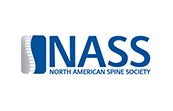Radiofrequency Ablation Patient Information Sheet
Radiofrequency Ablation Patient Information
What is Radiofrequency Lesioning?
Radiofrequency Ablation (RFA) is a safe, proven means of interrupting pain signals. Radiofrequency current is used to heat up a small volume of nerve tissue, thereby interrupting pain signals from that particular area. Radiofrequency techniques have been available for treating various pain disorders since the early 1970s. Since the 1980s physicians specializing in chronic pain diagnosis and treatment have found an increasing number of applications for this established technology.
Radiofrequency needles, accurately placed with the aid of fluoroscopic X-ray machines, generate local heat at the tip when electrical current is applied, which can be precisely controlled to thermocoagulate painful nerves with minimal tissue damage.
What is the typical procedure?
You will be asked to lie flat on your stomach. After the local anesthetic is administered, the doctor will insert a small needle into the area where you experience pain. Under the guidance of X-ray, the doctor will guide the needle to the exact target area. A microelectrode then will be inserted through the needle to begin the stimulation process. During this process, you need to be awake as the doctor will ask you if you feel a tingling sensation. The object of the stimulation process is to help the doctor determine if the electrode is in the optimal area for treatment to produce the most relief.
Once the needle electrode placement is verified, treatment can begin. A small radiofrequency (RF) current will travel through the electrode into the surrounding tissue, causing the tissue to heat and eliminate pain pathways. You should alert the doctor if at any time during the procedure you experience discomfort, especially in the extremities. Otherwise, you may experience a slight burning or pressure sensation at the site of the injection.
Will the procedure hurt?
Nerves are protected by layers of muscle and soft tissues. The procedure involves inserting a needle through skin and those layers of muscle and soft tissues, so there is some discomfort involved. However, we numb the skin and deeper tissues with a local anesthetic using a very thin needle prior to inserting the needle.
Will I be “put out” for this procedure?
No. This procedure is done under local anesthesia. Most of the patients also receive intravenous sedation and analgesia, which makes the procedure easier to tolerate. The amount of sedation given generally depends upon the patient tolerance. It is necessary for you to be awake enough to communicate easily during the procedure.
How long will the pain relief last?
With radiofrequency treatment, generally the nerve function is interrupted for 6-9 months (it can be as short as 3 months or as long at 18 months). However, the human body may regenerate pain pathways over time. It is not unusual that the procedure may need to be repeated at some point in the future.
What are the benefits of Radio Frequency Ablation?
The procedure disrupts nerve conduction (such as conduction of pain signals), and it may in turn reduce pain, and other related symptoms. Approximately 70-80% of patients will get good block of the intended nerve. This should help relieve that part of the pain that the blocked nerve controls. Sometimes after a nerve is blocked, it becomes clear that there is pain from the other areas as well.
What are the risks of Radio Frequency Ablation?
Generally this procedure is safe, however with any procedure, there are some inherent risks, although most of these are minimal. Common risks include but are not limited to bruising, bleeding, headaches, irritation of a nerve or nerve injury, including paralysis, numbness and weakness. Risks also include infection or reactions to the medications. Serious risks and complications are extremely rare, however.
Can I go to work the next day?
You should be able to return to your work the next day. Sometimes soreness at the injection site causes you to be off work for a day or two.





